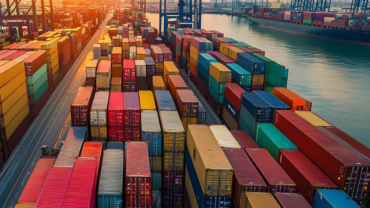With the disruption in global supply chains all over the world making almost daily headlines, global companies may also come under pressure from ESG issues among their suppliers
Over the last 20 months, the challenges to most businesses — especially global companies — have been numerous. The rollout of the COVID-19 vaccine has helped eased some of those challenges; yet, the economic, political, and societal consequences of the pandemic are likely to be a source of heightened business interruption in the years ahead.
There are almost daily headlines on the disruption in global supply chains all over the world and impacting almost all industries. The constraints and challenges remain, and, in some cases, has exacerbated the production of major and common household items including lumber to build houses and microchips needed to manufacture cars and cellphones, just to name two. The situation has created huge business headaches.
Now, some businesses are exploring unique opportunities to figure out how best to meet the challenges to their supply chains, including manufacturing parts themselves which otherwise would have been produced by a third party. For example, electronic car maker Telsa is making its own computer car chips. Of course, most companies cannot afford or want to get into the business of making component parts for their products that they would otherwise get from a parts maker.
So, for those businesses that simply will not or cannot make the necessary parts required for their products, the next best option is to increase the number of vendors in their supply chains. However, increasing the vendor pool also increases risk — indeed, the more third parties that a company uses means that more work is required to ensure the integrity of each business. The idea that your vendors’ practices become your practices is now becoming the standard.
The business challenge of ESG
Just as companies must figure out how to stay in business by meeting the demands of their customers, so too must companies balance that with what has become an emerging compliance issue, hewing to standards of environmental, social, and corporate governance concerns. What started as optional for many global corporations is now increasingly becoming a requirement. Industries from retail to oil are required to not only make profit for their shareholders, but also care for the needs of other stakeholders, such as customers, employees, and members of the communities in which the business operates.
All these stakeholders are now influencing business practices by using their buying power or other leverage to compel companies to act in ethically response ways. In addition, some national and local governments are enacting regulations and compliance requirements that are pushing companies to focus on ESG issues as a business strategy.
As companies develop and execute their ESG strategies, one area of potential vulnerability is in their global supply chains. Supply chains can expose companies to hidden and uncontrollable risk that negatively affects ESG — such as depletion of natural resources, human rights abuses, top-level corruption, and more. In fact, for most global brands, their greatest exposure to falling out of ESG compliance can occur in their supply chain. And that makes managing vendors and other third parties in the supply chain mission critical for most large corporations.
However, managing supply chain vendors during “normal” times is a task unto itself, and attempting to manage them while in midst of pandemic when resources are already short can feel impossible.
Impossible or improbable, businesses must have transparency into their supply chain. It is no longer acceptable (if it ever was) to simply say, “I had no idea! This vendor did this.” Adding to this dilemma for most companies is that with ESG concerns and how to encourage them still in such a fledgling stage, there may be no good guidance on what to do.
Here are a few suggestions on how to balance supply chain challenges with the need to align with your company’s ESG strategies.
Create ESG metrics for suppliers
It’s difficult to measure something that isn’t clearly defined or has several meanings depending on region or those involved. And few companies possess the resources to fully monitor each and every vendor within their supply chain, especially as companies need to quickly find additional vendors to meet supply shortages. As companies outline their ESG strategy, however, it would be wise to create a set of metrics and analytics to assess their suppliers’ ESG practices. In fact, In fact, the Supply Chain Management Index can be a useful tool to help with determining what metrics should be used.
Communicate, always
Effectively integrating ESG goals into supply chain operations requires strong, frequent communication, says Gregory Chabon, a partner at Womble Bond Dickinson, and Rob Handfield, Executive Director of Supply Chain Resource Cooperative and Bank of America University Distinguished Professor of Operations and Supply Chain Management.
Mapping
The primary function of supply chain mapping is that it allows companies to put strategies in place to rapidly react when a supplier faces a shortage, an order gets lost in the system, there’s a surge in demand, or something even more unexpected happens. Through mapping, businesses classify suppliers into tiers, and in doing so can “reveal weak points in a supply chain that may go undetected in a particular audit,” says Chabon and Handfield.
Contracts
Lastly, businesses can include language in their contracts with supply chain vendors that explicitly outlines the company’s ESG goals as well as what is expected of the vendors. And don’t forget to spell out that violations of these ESG standards could lead to the termination of the contract.
As more is expected of global businesses from investors, customers, employees and others, companies are now judged and rated on how well the take into consideration not just the current environment in which their business operates but how the company will meet the needs of the greater planet. Be it protecting the environment, striving for social justice, or other governing themselves sustainably and responsibly, global companies today are being called to play a larger role than just providing a product or service.






